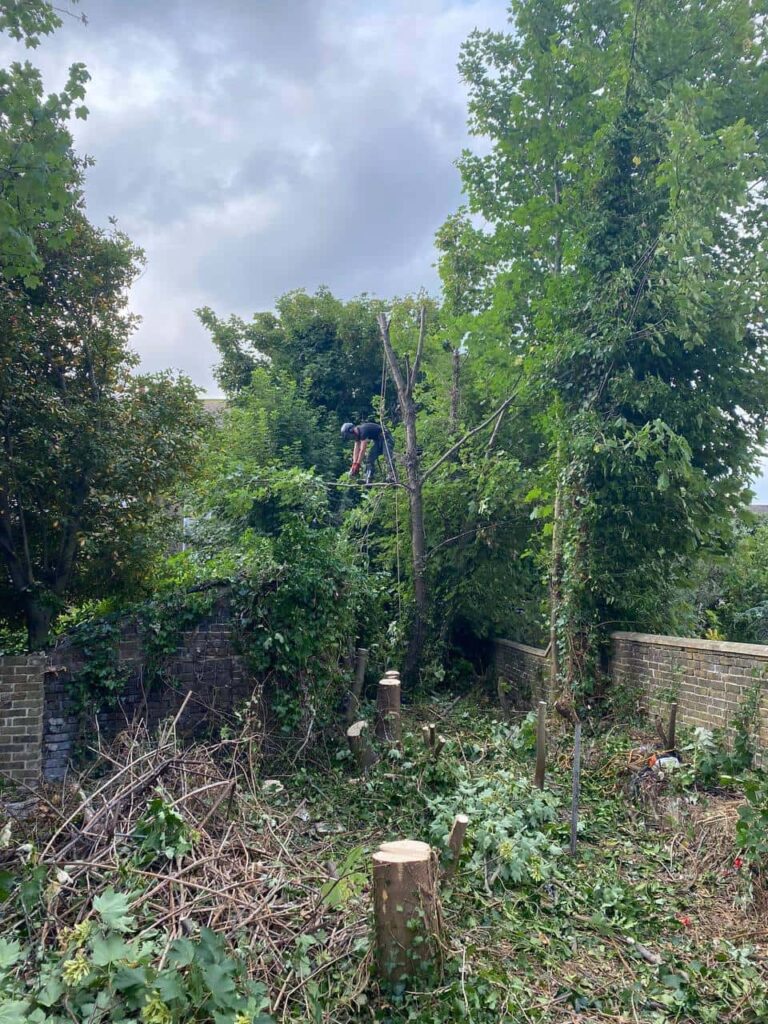Introduction
A leaning tree can be a concerning sight for any homeowner. Whether caused by storm damage, soil erosion, or natural growth patterns, a tree that is tilting or leaning significantly may pose a safety risk to your property, family, or neighbours. While it’s not always necessary to fell a leaning tree, there are certain indicators that can help determine if removal is the best course of action.
For homeowners in Lakenheath, Suffolk, understanding when a leaning tree should be felled can save time, money, and prevent potential hazards. In this article, we will discuss how to assess whether a leaning tree needs to be removed and the important factors to consider before making a decision.
When Should a Leaning Tree Be Felled?
1. Signs of Structural Weakness
The first step in assessing whether a leaning tree should be felled is to evaluate its structural integrity. If a tree has developed a lean due to weakened roots or a damaged trunk, it may be at risk of falling, especially during severe weather.
- Cracks in the Trunk: If you notice visible cracks or splits in the trunk of the tree, this could indicate internal damage. A weakened trunk may not support the tree’s weight, increasing the risk of it toppling.
- Hollowing or Cavities: Trees with hollowed-out trunks or large cavities may be structurally compromised. This internal damage can cause instability, particularly if the tree is leaning significantly.
If any of these signs are present, it’s crucial to consult a professional tree surgeon in Lakenheath, Suffolk, who can assess whether the tree poses a risk to your property.
2. Exposed Roots or Soil Erosion
Leaning trees often suffer from damaged or exposed roots, which can further compromise their stability. Trees growing on sloped or soft soil are particularly vulnerable to root erosion, which can cause the tree to lean more dramatically over time.
- Exposed Roots: If you can see the tree’s roots protruding from the ground or if the soil around the base of the tree is eroding, the roots may no longer be able to anchor the tree securely.
- Soft or Wet Soil: Saturated or soft soil can lead to root failure, especially in areas that experience heavy rainfall or flooding. If the leaning tree is located in an area where the soil is frequently wet, it may be a sign that the tree needs to be felled before the roots lose their grip entirely.
Assessing the condition of the roots and surrounding soil is essential when determining if a leaning tree is a danger.
3. Leaning Angle and Rate of Lean
Another important factor to consider is the angle at which the tree is leaning and whether the lean is increasing over time.
- Significant Lean: If the tree has an angle of 30 degrees or more, it is often a sign that the tree is at risk of falling. Trees with less severe leaning angles may be able to recover with corrective pruning or soil stabilisation, but extreme leaning typically indicates structural instability.
- Rapid Increase in Lean: A tree that is gradually leaning more over time may be suffering from root instability or other underlying problems. If you notice that the tree has become progressively more tilted, it may be necessary to have it assessed by a professional tree surgeon to determine whether removal is necessary.
Regular observation of the tree’s lean and any changes in its position is crucial for identifying potential risks.
4. Branch and Foliage Health
A tree’s overall health can also affect its stability. Trees that are leaning may experience stress that impacts their ability to take up nutrients and water, leading to poor health.
- Dead or Dying Branches: If the leaning tree has large dead or dying branches, this may indicate that the tree is no longer growing in a healthy way. Such branches are more prone to breakage and could fall, posing a risk to nearby structures.
- Lack of Foliage: If a tree is showing significant signs of stress, such as sparse or yellowing leaves, it may indicate that the tree is struggling to survive. Poor health can weaken the structure of the tree, increasing the likelihood of failure.
A tree with poor health combined with a lean may require removal to protect your property.
5. Proximity to Structures or High-Traffic Areas
Finally, consider the proximity of the leaning tree to your home, driveway, or other structures. Trees that are leaning in the direction of buildings, power lines, or walkways pose a greater risk to safety.
- Nearby Buildings: A leaning tree close to your home or other structures is more likely to cause significant damage if it falls.
- High-Traffic Areas: If the tree is near walkways or driveways, the risk to people or vehicles is higher. A falling tree can result in injury or property damage, especially if the lean is severe.
If a leaning tree is positioned dangerously close to structures or high-traffic areas, removal should be considered as a priority.
Conclusion
Leaning trees are a common concern for homeowners, but not all leaning trees need to be felled. By evaluating the tree’s structural integrity, health, root system, and proximity to structures, you can determine if it poses a risk to your property and safety.
For residents of Lakenheath, Suffolk, Lakenheath Tree Surgeons provides expert tree assessments and removal services. If you have a leaning tree and are unsure whether it needs to be felled, contact us today. Our experienced team will inspect the tree and provide professional advice to ensure your property remains safe and secure.
Call us on: 01842 771 096
Click here to find out more about Lakenheath Tree Surgeons
Click here to complete our contact form and see how we can help with your tree needs.

